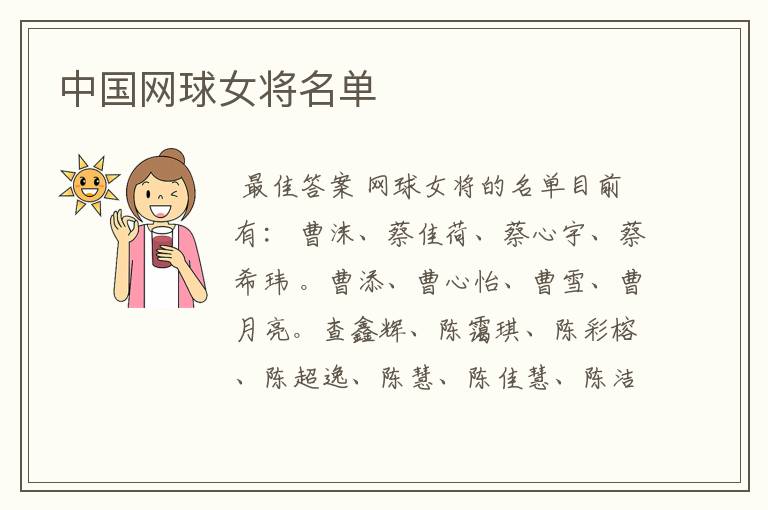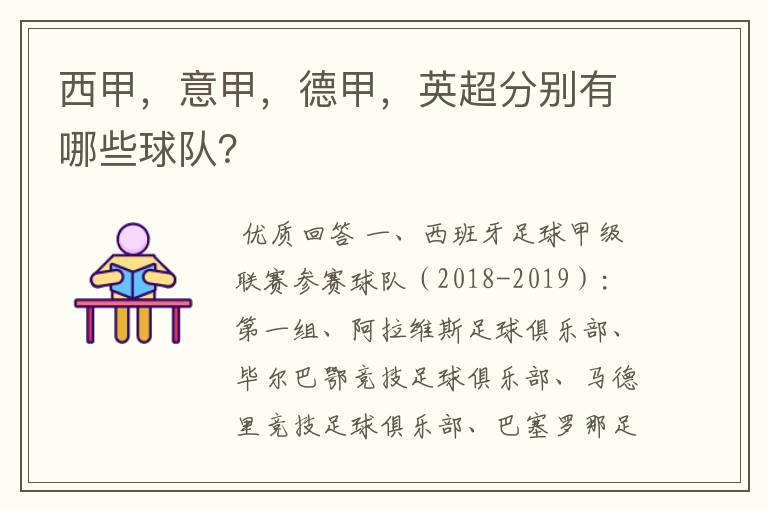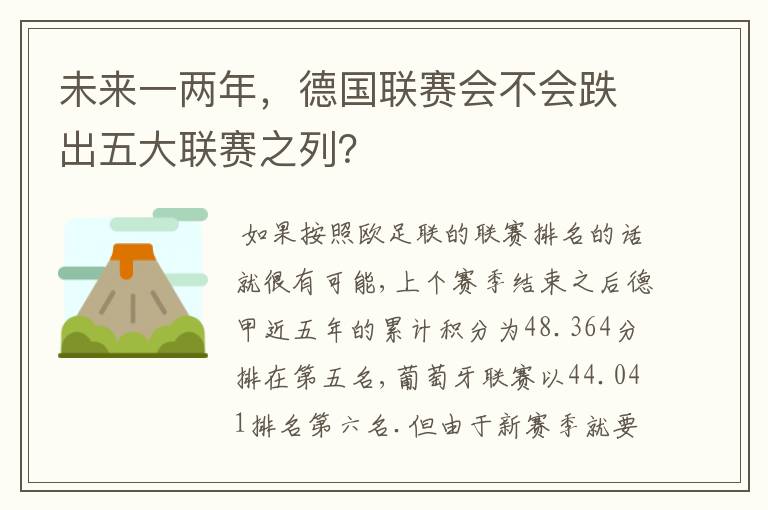介绍西班牙的短文。介绍西甲英文的演讲
今天运困体育就给我们广大朋友来聊聊介绍西甲英文的演讲,希望能帮助到您找到想要的答案。
西班牙国家简介 西班牙国家的介绍

最佳答案1、西班牙王国(西班牙语:Reino de Espaa;英语:The Kingdom of Spain),简称是西班牙,位于欧洲西南部的伊比利亚半岛,地处欧洲与非洲的交界处,西邻葡萄牙,北濒比斯开湾,东北部与法国及安道尔接壤,南隔直布罗陀海峡与非洲的摩洛哥相望。领土还包括地中海中的巴利阿里群岛,大西洋的加那利群岛及非洲的休达和梅利利亚。该国是一个多山国家,总面积505925平方公里,其海岸线长约7800公里。以西班牙语作为官方语言的国家数量世界第二,仅次于英语。
2、中世纪时,境内有多个国家并立,1492年西班牙光复运动胜利后,建立统一的西班牙王国。16世纪起,成为大航海时代中重要的海上强国,在欧洲、美洲、亚洲和非洲建立起大量殖民地。1494年和葡萄牙共同签署了《托尔德西里亚斯条约》,意图将世界瓜分为二。在文艺复兴时期,西班牙帝国成为当时欧洲最强大的国家和影响全球的日不落帝国。三十年战争后开始衰落。在经历两个共和国和一个君主国后,于1978年宣布实行君主立宪制。
3、西班牙是一个发达的资本主义国家,也是欧盟和北约成员国。截至2020年10月,经济总量居欧盟第五位、世界第十三位。主要工业有纺织、钢铁、水泥、造船、汽车制造、电力等。农业现代化水平较高,橄榄油产量和葡萄种植面积均居世界第一。
西班牙国家介绍
最佳答案西班牙位于欧洲西南部伊比利亚半岛上。南隔直布罗陀海峡与非洲的摩洛哥相望,扼大西洋和地中海航路的咽喉。面积504750平方千米。海岸线长为3900千米。居民主要是西班牙人,少数民族有加泰罗尼亚人、加里西亚人和巴斯克人。多信奉天主教。西班牙语为官方语言。
1492年建立统一的封建王朝,后逐渐成为海上强国,有许多殖民地。16世纪末叶后逐渐衰落。19世纪王朝被推翻建立共和国。1936年2月月成立了联合政府。1947年7月月宣布为君主国。1973年3月9日同我国建交。
为欧洲高山国家之一。北部和南部沿海为山地,内陆的中部高原约占全国总面积的60%。200米以下的平原区占11% 。北部和西北部属海洋性温带阔叶林气候。南部和东南部属亚热带地中海式气候。有丰富的煤、铁、汞、黄铁、铜、铅、锡、铀等矿物资源。
扩展资料
首都:马德里,也是全国的政治、经济、交通中心。
重要节日:国庆日10月12日。国王命名日6月24日。
时差:比北京时间晚8小时。
国花:石榴花。
誉称:旅游王国( 旅游业收入居世界第一位) 、橄榄王国( 油橄榄树的种植面积和油橄榄产量居世界首位) 。
民俗:斗牛是传统民族文化,著名斗牛士则成为青年崇拜的偶象。潘普洛纳城每年7月7日庆祝关牛节( 圣费尔明节) 。
参考资料来源:人民网-西班牙简介
有没有关于介绍西班牙的英语文章,的
最佳答案Spain
A country of southwest Europe comprising most of the Iberian Peninsula and the Balearic and Canary Islands. Inhabited since the Stone Age, the region was colonized by Phoenicians and Greeks and later ruled by Carthage and Rome (after 201b.c.). Barbarians first invaded Spain in a.d. 409 but were supplanted by Moors from North Africa (711-719), who organized a kingdom known for its learning and splendor. The Moors were gradually displaced by small Christian states and were ousted from their last stronghold, Granada, in 1492. Ferdinand of Aragon and Isabella of Castile then became rulers of a united Spain, which became a world power through exploration and conquest. After the empire was lost in the 18th and 19th centuries, Spain experienced social and economic unrest that culminated in the Spanish Civil War (1936-1939) and the rise of Francisco Franco. Madrid is the capital and the largest city. Population, 38,872,389.
西班牙:欧洲西南部一国家,由伊比利亚半岛大部分、巴里阿里群岛和加纳利群岛组成。从石器时代开始这里就有人居住,该地区先是成为腓尼基人和希腊人的殖民地,后被迦太基人和罗马人统治(公元前201年以后)。野蛮人于 公元409首次入侵西班牙,但后来被来自北非的摩尔人取代(711-719年),摩尔人建立了一个博学和辉煌的王国。后来摩尔人逐渐被基督教小/FONT>��妫�⒆钪沼492年被逐出他们的堡垒-格拉纳达,而后阿拉贡的斐迪南和卡斯提里亚的伊莎贝拉成为西班牙的统治者,他们通过扩张和征服成为世界强国。该帝国在18世纪和19世纪没落以后,西班牙国内社会、经济上的动荡最终导致了西班牙内战(1936-1939年)和弗朗西斯科·佛朗哥的崛起。马德里是其首都和最大城市。人口38,872,389
----------------------------------------------------
Spain
officially Kingdom of Spain
Country, southwestern Europe.
One of Europe's largest countries, it is located on the Iberian Peninsula and also includes the Balearic and Canary islands. Area: 195,364 sq mi (505,990 sq km). Population (2002 est.): 40,998,000. Capital: Madrid. The people are predominantly Spanish, though there are populations of Basques, Catalans, and Roma (Gypsies). Languages: Castilian Spanish (official), Catalan, Galician, and Basque. Religion: Roman Catholicism. Currency: euro. Spain's large central plateau is surrounded by the Ebro River valley, the mountainous Catalonia region, the Mediterranean coastal region of Valencia, the Guadalquivir River valley, and the mountainous region extending from the Pyrenees to the Atlantic coast. Spain has a developed market economy based on services, light and heavy industries, and agriculture. Mineral resources include iron ore, mercury, and coal. Agricultural products include grains and livestock. Spain is one of the world's major producers of wine and olive oil. Tourism is also a major industry, especially along the southern Costa del Sol. Remains of Stone Age populations dating back some 35,000 years have been found throughout Spain. Celtic peoples arrived in the 9th century BC, followed by the Romans, who dominated Spain from с 200 BC until the Visigoth invasion in the early 5th century AD. In the early 8th century most of the peninsula fell to Muslims (Moors) from North Africa, and it remained under their control until it was gradually reconquered by the Christian kingdoms of Castile, Aragon, and Portugal. Spain was reunited in 1479 following the marriage of Ferdinand II (of Aragon) and Isabella I (of Castile). The last Muslim kingdom, Granada, was reconquered in 1492, and about this time Spain established a colonial empire in the Americas. In 1516 the throne passed to the Habsburgs, whose rule ended in 1700 when Philip V became the first Bourbon king of Spain. His ascendancy caused the War of the Spanish Succession, which resulted in the loss of numerous European possessions and sparked revolution within most of Spain's American colonies. Spain lost its remaining overseas possessions to the U.S. in the Spanish-American War (1898). (See Cuba; Guam; Philippines; Puerto Rico.) Spain became a republic in 1931. The Spanish Civil War (1936–39) ended in victory for the Nationalists under Gen. Francisco Franco, who ruled as a dictator until his death in 1975. His successor as head of state, Juan Carlos I, restored the monarchy with his accession to the throne; a new constitution in 1978 established a constitutional monarchy. Spain has two legislative houses; the chief of state is the king, and the head of government is the prime minister. Spain joined NATO in 1982 and the European Community in 1986. The 1992 quincentennial of Christopher Columbus's first voyage from Spain to the Americas was marked by a fair in Sevilla and the staging of the Olympic Games in Barcelona. In the 1990s Spain developed closer ties to other European countries but continued to suffer internally, as Basque separatists pressed their claims for independence and some continued a campaign of violence.
西班牙 [Spain]
正式名称西班牙王国。
欧洲西南部国家。欧洲最大的国家之一,位于伊比利亚半岛。也包括巴利阿里群岛和加那利群岛。面积:505,990平方千米。人口:40,144,000(2001)。首都:马德里。西班牙人占人口的大多数,其他还有巴斯克人、加泰罗尼亚人和吉普赛人(罗姆人)。语言:卡斯蒂利亚西班牙语(官方语)、加泰罗尼亚语、加利西亚语和巴斯克语。宗教:天主教(2/3)和伊斯兰教。货币:欧元。西班牙的大片中央高地可分为5个自然区:埃布罗河流域,加泰罗尼亚山区,巴伦西亚地中海沿岸地区,瓜达尔基维尔河流域和从比利牛斯山脉伸至大西洋沿岸的山区。西班牙发达的市场经济主要以服务业、轻工业、重工业和农业为基础。矿产资源包括铁矿石、汞和煤。农产品有谷物和牲畜。西班牙也是世界主要的葡萄酒生产国之一。旅游业也是西班牙的一个主要行业,尤其是在沿太阳海岸南部。西班牙为君主立宪政体,两院制。国家元首是国王,政府首脑为总理。在西班牙境内各地曾发现约3.5万年前石器时代的人类遗迹。公元前9世纪,凯尔特人来到这里,接着是罗马人。自公元前200年,罗马人统治了西班牙,直到5世纪初西哥特人入侵。8世纪初,半岛大部分地区落入来自北非的穆斯林(摩尔人)手中,此后该地区一直由穆斯林控制,直到逐渐被卡斯蒂利亚和阿拉贡地区的基督教王国及葡萄牙重新占领。随着阿拉贡的费迪南德二世和卡斯蒂利亚的伊莎贝拉一世的成婚,西班牙于1479年统一。1492年,征服了最后穆斯林王国格拉纳达。大约此时,西班牙也在美洲建立了殖民帝国。1516年将王位传给哈布斯堡王朝。1700年,腓力五世成为西班牙第一个波旁国王,结束哈布斯堡王朝统治。腓力登基引发了西班牙王位继承战争,结果丧失了许多欧洲属地。战争的胜利使多数西班牙美洲殖民地的人民受到鼓舞,纷纷起来革命。在1898年的美西战争中,西班牙在海外所剩的属地(参阅古巴[Cuba]、关岛[Guam]、菲律宾[Philippines]和波多黎各[Puerto Rico])丧失给美国。1931年西班牙成为一个共和国。西班牙内战(1936~1939)以由佛朗哥将军领导下的国家主义者取得胜利而告终。佛朗哥独裁统治至1975年去世。国家元首的继承人――胡安・卡洛斯一世就任王位,恢复君主体制。1978年新宪法实行君主议会制。1982年加入北约。1986年加入欧洲共同体。1992年为纪念C.哥伦布从西班牙首航美洲500周年,西班牙在塞维利亚举办博览会并在巴塞罗那举办奥林匹克运动会以示庆祝。20世纪90年代西班牙同其他欧洲国家发展了较密切的关系,不过,国内仍受到巴斯克分离主义者要求独立的威胁。
介绍西班牙的英文文章 词汇简单点的
最佳答案分类: 教育/科学 >> 外语学习
问题描述:
关于西班牙的英文演讲文 词汇简单点的 适合演讲时间在6到7分钟的 介绍西班牙的首都 人口 人文风俗 特点地理位置等等.
解析:
Spain, officially the Kingdom of Spain (Spanish: Reino de España, short form: España[1]), is a country located in Southern Europe, with o *** all exclaves in North Africa (both bordering Morocco). Spain is a democracy which is anized as a parliamentary monarchy. It is a developed country with the ninth-largest economy in the world.[2] It is the largest of the three sovereign nations that make up the Iberian Peninsula—the others are Portugal and the microstate of Andorra.
To the west and to the south of Galicia, Spain borders Portugal. To the south, it borders Gibraltar (belonging to the UK) and, through its cities in North Africa (Ceuta and Melilla), Morocco. To the northeast, along the Pyrenees mountain range, it borders France and the tiny principality of Andorra. It also includes the Balearic Islands in the Mediterranean Sea, the Canary Islands in the Atlantic Ocean and a number of uninhabited islands on the Mediterranean side of the strait of Gibraltar, known as Plazas de soberanía, such as the Chafarine islands, the isle of Alborán, the "rocks" (peñones) of Vélez and Alhucemas, and the tiny Isla Perejil. In the northeast along the Pyrenees, a *** all exclave town called Llívia in Catalonia is surrounded by French territory.
The term Spain (España in Spanish) es from the name as the Romans knew it in Latin: Hispania.
The earliest records of hominids living in Europe to date has been found in the Spanish cave of Atapuerca which has bee a key site for world Paleontology due to the importance of the fossils found there, dated roughly 1,000,000 years ago.
Modern humans in the form of Cro-Magnons began arriving in the Iberian peninsula from north of the Pyrenees some 35,000 years ago. The more conspicuous sign of prehistoric human settlements are the famous paintings in the northern Spanish Altamira (cave), which were done ca. 15,000 BCE and are regarded, along with those in Lascaux, France, as paramount instances of cave art.
The earliest urban culture documented is that of the semi-mythical southern city of Tartessos, pre- 1100 BCE. The seafaring Phoenicians, Greeks and Carthaginians successively settled along the Mediterranean coast and founded trading colonies there over a period of several centuries. Around 1100 BCE, Phoenician merchants founded the trading colony of Gadir or Gades (modern day Cádiz) near Tartessos. In the 9th century BCE the first Greek colonies, such as Emporion (modern Empúries), were founded along the Mediterranean coast on the East, leaving the south coast to the Phoenicians. The Greeks are responsible for the name Iberia, apparently after the river Iber (Ebro in Spanish). In the 6th century BCE the Carthaginians arrived in Iberia while struggling first with the Greeks and shortly after with the Romans for control of the Western Mediterranean. Their most important colony was Carthago Nova (Latin name of modern day Cartagena).
The native peoples which the Romans met at the time of their invasion in what is now known as Spain were the Iberians, inhabiting from the Southwest part of the Peninsula through the Northeast part of it, and then the Celts, mostly inhabiting the north and northwest part of the Peninsula. In the inner part of the peninsula, where both groups were in contact, a mixed, distinctive, culture was present, the one known as Celtiberian.
[edit] Roman Empire and Germanic Invasions
Main article: Hispania
Roman bridge in CordobaThe Romans arrived in the Iberian peninsula during the Second Punic war in the 2nd century BCE, and annexed it under Augustus after o centuries of war with the tenacious Celtic and Iberian tribes (from whom they copied the short sword known as falcata). These, along with the Phoenician, Greek and Carthaginian coastal colonies, became the province of Hispania. It was divided into Hispania Ulterior and Hispania Citerior during the late Roman Republic; and, during the Roman Empire, Hispania Taraconensis in the northeast, Hispania Baetica in the south and Lusitania (province with capital in the city of Emerita Augusta) in the southwest.
Hispania supplied Rome with food, olive oil, wine and metal. The emperors Trajan, Hadrian, Marcus Aurelius and Theodosius I, the philosopher Seneca and the poets Martial, Quintilian and Lucan were born in Spain. The Spanish Bishops held the Council at Elvira in 306. The collapse of the Western Roman empire did not lead to the same wholesale destruction of Western classical society as happened in areas like Britain, Gaul and Germania Inferior during the Dark Ages, even if the institutions, infrastructure and economy did suffer considerable degradation. Spain's present languages, its religion, and the basis of its laws originate from this period. The centuries of uninterrupted Roman rule and settlement left a deep and enduring imprint upon the culture of Spain.
The first hordes of Barbarians to invade Hispania arrived in the 5th century, as the Roman empire decayed. The tribes of Goths, Visigoths, Swebians (Suebi), Alans, Asdings and Vandals, arrived to Spain by crossing the Pyrenees mountain range. They were all of Germanic origin. This led to the establishment of the Swebian Kingdom in Gallaecia, in the northwest, and the Visigothic Kingdom elsewhere. (For a while, the Germans lived under their law while the much more numerous Spaniards continued more or less to live under Roman law.) The Visigothic Kingdom eventually enpassed the entire Iberian Peninsula with the Roman Catholic conversion of the Goth monarchs. The famous horseshoe arch, which was adapted and perfected by the later Muslim era builders was in fact originally an example of Visigothic art.
[edit] Muslim Iberia
Main article: Al-Andalus
In the 8th century, nearly all the Iberian peninsula, which had been under Visigothic rule, was quickly conquered (711–718), by mainly Berber Muslims (see Moors), who had crossed over from North Africa, led by Tariq ibn Ziyad. Visigothic Spain was the last of a series of lands conquered in a great wesard charge by the Islamically inspired armies of the Umayyad empire. Indeed they continued northwards until they were defeated in central France at the Battle of Tours in 732. Astonishingly the invasion started off as an invitation from a Visigoth faction within Spain for support. But instead the Moorish army, having defeated King Roderic proceeded to conquer the peninsula for itself. The Roman Catholic populace, unimpressed with the constant internal feuding of the Visigothic leaders, often stood apart from the fighting, often weling the new rulers, thereby fing the basis of the distinctly Spanish-Muslim culture of Al-Andalus. Only three *** all counties in the mountains of the north of Spain managed to cling to their independence: Asturias, Navarra and Aragon, which eventually became kingdoms.
The Age of the Islamic EmpireThe Muslim emirate proved strong in its first three centuries; stopping Charlemagne's massive forces at Saragossa and, after a serious Viking attack, established effective defences. Indeed it became a terror in its own right to Christian neighbours, with its "al-jihad fil-bahr" (holy war at sea). Christian Spain struck back from its mountain redoubts by seizing the lands north of the Duero river, and the Franks were able to seize Barcelona (801) and the Spanish Marches), but save for these and some other *** all incursions in the north, the Christians were unable to make headway against the superior forces of Al-Andalus for several centuries. It was only in the 11th century that the break up of Al-Andalus led to the creation of the Taifa kingdoms, who attempted to outshine each other in art and culture and were often at war, became vulnerable to the consolidating power of Spain's Christian kingdoms.
The Moorish capital was Córdoba, in southern Spain. During this time large populations of Jews, Christians and Muslims lived in close quarters, and at its peak some non-Muslims were appointed to high offices under the some of the more lenient Muslim rulers. At its best it produced exquisite architecture and art, and Muslim and Jewish scholars played a major part in reviving the tradition of classical Greek philosophy, mathematics and science in western Europe, whilst making their own contributions to it. However, there were restrictions on non-Muslims that grew after the death of Al-Hakam II in 976. Later invasions of stricter Muslim groups led to persecutions of non-Muslims, forcing some (including Muslim scholars) to seek safety in the then still relatively tolerant city of Toledo after its Christian reconquest in 1085.
Interior of the Mezquita in Córdoba, a Muslim mosque.Spanish society under Muslim rule became increasingly plex, partly because Islamic conquest did not involve the systematic conversion of the much larger conquered population to Islam. At the same time, Christians and Jews were recognized under Islam as "peoples of the book", and so given dhimmi status. Most importantly, the Islamic Berber and Arab invaders were a *** all minority, ruling over several million Christians. Thus, Christians and Jews were free to practise their religion, but faced certain restrictions and financial burdens. Conversion to Islam proceeded at a steadily increasing pace, as it offered social and economic and political advantages. Merchants, nobles, large landowners, and other local elites were usually among the first to convert. By the 11th century Muslims are believed to have outnumbered Christians in Al-Andalus.
The Muslim munity in Spain was itself diverse and beset by social tensions. From the beginning, the Berber people of North Africa had provided the bulk of the armies, clashed with the Arab leadership from the Middle East. The Berbers, who were paratively recent converts to Islam, resented the aristocratic pretensions of the Arab elite. They soon gave up attempting to settle the harsh lands of the north of the Meseta Central handed to them by the Arab rulers, and many returned to Africa during a Berber uprising against Arab rule. However, the Berbers later took over power and Muslim Spain fell under the rule of the Almoravid and then the Almohad dynasties, amongst others. Over time the relatively tiny number of Moors gradually increased with immigration and cross marriages. Large Moorish populations grew, most notably in the south in the Guadalquivir river valley, and in the east, along the fertile Mediterranean coastal plain and in the Ebro river valley.
Muslim Spain was wealthy and sophisticated under Islamic rule. Cordoba was the richest and most sophisticated city in all of western Europe. It was not until the 12th century that western medieval Christiandom began to reach parable levels of sophistication, and this was due in part to the stimulus ing from Muslim Spain. Mediterranean trade and cultural exchange flourished. Muslims imported a rich intellectual tradition from the Middle East and North Africa, including knowledge of mathematics and science, that they helped revive. Crops and farming techniques introduced by the Arabs, led to a remarkable expansion of agriculture, which had been in decline since Roman times. In towns and cities magnificent mosques, palaces, and other monuments were constructed. Outside the cities, the mixture of large estates and *** all farms that existed in Roman times remained largely intact because Muslim leaders rarely dispossessed landowners. The Muslim conquerors were relatively few in number and so they tried to maintain good relations with their subjects. This relative social peace, which was already deteriorating from the late 10th century, broke down with the later, stricter, Muslim sects.
Roman, Jewish, and Muslim culture interacted in plex ways. A large part of the population gradually adopted Arabic. Arabic was the official language of government. Even Jews and Christians often spoke Arabic, while Hebrew and Latin were frequently written in Arabic script. These diverse traditions interchanged in ways that gave Spanish culture — religion, literature, music, art and architecture, and writing systems - a rich and distinctive heritage. However, as the 11th century drew to a close most of the north and centre of Spain was back under Christian control.
[edit] Fall of Muslim rule and Unification
Main article: Reconquista
Equal partners: Ferdinand II of Aragon and Isabella I of CastileThe long period of expansion of the Christian kingdoms, beginning in 722 with the Muslim defeat in the battle of Covadonga and the creation of the Christian kingdom of Asturias, only eleven years after the Moorish invasion, is called the Reconquista. As early as 739 Muslim forces were driven out of Galicia, which came to host one of Christianity's holiest sites, Santiago de Compostela. Areas in the northern mountains and around Barcelona were soon captured by Frankish and local forces, providing a base for Spain's Christians. The 1085 conquest of the central city of Toledo largely pleted the reconquest of the northern half of Spain.
In 1086 the Almoravids, an ascetic Islamic sect from North Africa, conquered the divided *** all Moorish states in the south and launched an invasion in which they captured the east coast as far north as Saragossa. By the middle of the 12th century the Almoravid empire had disintegrated. The Battle of Las Navas de Tolosa in 1212 heralded the collapse of the great Moorish strongholds in the south, most notably Córdoba in 1236 and Seville in 1248. Within a few years of this nearly the whole of the Iberian peninsula had been reconquered, leaving only the Muslim enclave of Granada as a *** all tributary state in the south. Surrounded by Christian Castile but afraid of another invasion from Muslim northern Africa, it clung tenaciously to its isolated mountain splendour for o and half centuries. It came to an end in 1492 when Isabella and Ferdinand captured the southern city of Granada, the last Moorish city in Spain. The Treaty of Granada[3] guaranteed religious tolerance toward Muslims while Spain's Jewish population of over 200,000 people was expelled that year. At Ferdinand's urging the Spanish Inquisition had been established in 1478. With a history of being invaded by three Islamic empires (Ummayad, Almoravid and Almohad), there was a fear that Muslims might assist yet another invasion. Also, Aragonese labourers were angered by landlords' use of Moorish workers to undercut them. A 1499 Muslim uprising, triggered by forced conversions, was crushed and was followed by the first of the expulsions of Muslims, in 1502. The year 1492 was also marked by the discovery of the New World. Isabella I funded the voyages of Christopher Columbus. Ferdinand and Isabella, as exemplars of the Renaissance New Monarchs, consolidated the modernization of their respective economies that had been pursued by their predecessors and enforced reforms that weakened the position of the great magnates against the new centralized crowns. In their contests with the French army in the Italian Wars, Spanish forces under Gonzalo Fernández de Córdoba eventually achieved success, against the French knights, thereby revolutionizing warfare. The bined Spanish kingdoms of Castile and Aragon, long vibrant and expansive, emerged as a European great power.
The reconquest from the Muslims is one of the most significant events in Spanish history since the fall of the Roman Empire. Arabic quickly lost its place in southern Spain's life, and was replaced by Castilian. The process of religious conversion which started with the arrival of the moors was reversed from the mid 13th century as the Reconquista was advancing south: as this happened the Muslim population either fled or forcefully converted into Catholici *** , mosques and synagogues were converted into churches.
With the union of Castile and Aragón in 1479 and the subsequent conquest of Granada in 1492 and Navarre in 1512, the word Spain (España, in Spanish) began being used only to refer to the new unified kingdom and not to the whole of Hispania (the term Hispania (from which España was originally derived) is Latin and the term Iberia Greek).
[edit] From the Renaissance to the nieenth century
Main article: Hab *** urg Spain
Main article: Enlightenment Spain
Until the late fifteenth century, Castile and León, Aragón and Navarre were independent states, with independent languages, monarchs, armies and, in the case of Aragon and Castile, o empires: the former with one in the Mediterranean and the latter with a new, rapidly growing, one in the Americas. The process of political unification continued into the early 16th century. It was the unification of these separate Iberian empires that became the base of what is now referred to as the Spanish Empire.
英语短文,介绍西班牙国家的
最佳答案爱散了,心伤了,人已走远!而若即若离的思绪却依然时常呈现在自己的脑海中,反复地上演于是,懂得了放爱一条生路,带着深深的祝福,祝已消失在视线中的他(她)幸福安康!至少,人生的足迹中,曾有过他(她)相伴走过的旅程有人说:人,落地就哭,说明了人不愿意投胎做人,因为,人间有苦难的确,人的一生,既不是想象的那么好,也不是想象的那么坏每一个生命,都会历经酸甜苦辣的生活,为了生命的存活与延续,不停的奋斗在喜怒哀乐的人生路上,让不同的灵魂承受生活的摔打,接受磨难的考验在这个奋斗与摔打的艰辛过程中,苦难的逆境练就了生活的强者,而又演变了生活的弱者所谓强者,即是一个坚强而有用的人;所谓弱者,即是一个软弱无用的人有道是:强者容易坚强,正如弱者容易软弱坚强者能在命运之风暴中奋斗而更显坚强;软弱者只在命运之困境中退缩而更加的软弱在人生的路上,生活像一杯浓酒,不经三番五次的提炼,就不会这样的可口生活又像海洋,只有意志坚强的人,才能到达理想的彼岸自强不息,乃幸运之母,真正的人生,只有在经过艰难卓绝的斗争之后才能实现如果你能足够的坚强,你就是史无前例的;如果你能在困境中保持自强,那么,你就是令人崇敬的
今天的内容先分享到这里了,读完本文《介绍西班牙的短文。介绍西甲英文的演讲》之后,是否是您想找的答案呢?想要了解更多,敬请关注www.zuqiumeng.cn,您的关注是给小编最大的鼓励。
本文来自网络,不代表本站立场,转载请注明出处:https://www.zuqiumeng.cn/wenda/383430.html




